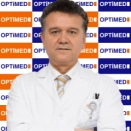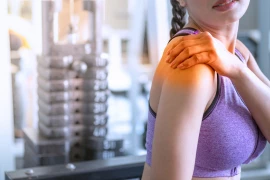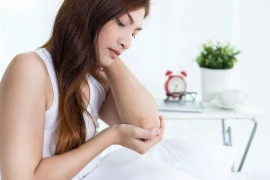
What is Rotator Cuff Muscles and Syndrome?
- What is Rotator Cuff Muscles and Syndrome?
- How Does Rotator Mold Form?
- What Are the Symptoms of Rotator Mold?
Firstly, the Rotator Cuff Muscles are defined as the whole of the muscle and tendon groups that work together to fasten the shoulder. The shoulder joint, defined as a ball-socket joint, sits in the shallow glenoid cavity of the scapula, that is, the scapula.
Since the range of motion in this joint is quite high, it is of great importance to keep it stationary. The rotator cuff muscles used precisely in this task stand as the most important structure in the stabilization task of the shoulder joint.
While the tendons in this joint provide stability in the shoulder, the muscles provide the mobility of the shoulder. The muscles found here ensure that the shoulder remains stationary and performs the rotational movement. The rotator cuff muscles, which are completely connected to the joint capsule in the shoulder, can be listed as follows:
- Supraspinatus: It is assigned to initiate the abduction movement in the arm.
- Infraspinatus: It plays a role in external rotation of the arm.
- Teres Minor: It makes the arm both adduction and external rotation.
- Subscapularis: It acts as the muscle that makes the internal rotation of the arm and performs some of the adduction.
As a result of the tears that occur together with the compression in these rotator cuff muscles, a disorder called rotator cuff syndrome may occur. This syndrome usually occurs as a result of problems in falling, lifting or traction on the shoulder.
How Does Rotator Mold Form?
Rotator cuff syndrome, which is mostly seen in athletes, can occur suddenly or as a result of high repetitive shoulder movements for long periods. This disorder can manifest itself in a chronic or sudden form depending on overloads. This syndrome, which is seen especially in young people and people who do sports, is also seen in people who make high repetitive movements on the shoulder above the head. In addition, this syndrome can also be seen in housewives who are engaged in cleaning or in people who need to lie on high places due to their profession.
To talk about the chronically occurring rotator cuff syndrome, over time, abrasions occur in the tendons of the rotator cuff muscles as a result of continuous movements in the direction of the top of the head. Partial tears may appear as a result of these abrasions, namely degenerations. So, what are the substances that can cause rotator cuff syndrome?
- Trauma: If there is any fall on the shoulder capsules, these muscles may rupture.
- Anatomy: The narrow distance seen in the subacromial space or differences in the type of acromion genetically play an important role in the occurrence of this disorder.
- Progression in age: The risk of this degeneration may increase with the decrease in tissues and circulation with age.
- High repetitive overhead activity: This rotator cuff syndrome can also be triggered by repetitive movements up to the top of the head.
What Are the Symptoms of Rotator Mold?
So, what are the possible symptoms of rotator cuff syndrome (cuff tear)? Let's take a look together:
- Burning conditions in the shoulder may be a sign of this ailment. In fact, this burning event can sometimes be felt in the form of stinging.
- Long-term or sudden pain in the arm and shoulder areas may suggest this syndrome.
- While performing the shoulder movements in the trainings, clicking sounds in the ear and felt on the shoulder may indicate this syndrome.
- Pain that occurs if you lie on your shoulder during the day and may increase gradually.
- When you try to raise your arm, the involuntary weakness you feel in the muscles may be an indicator of this syndrome.
- It should be reminded that persistent and recurrent shoulder pain, especially in the actions or activities you have done in the overhead direction, can also be a harbinger of rotator cuff syndrome.





